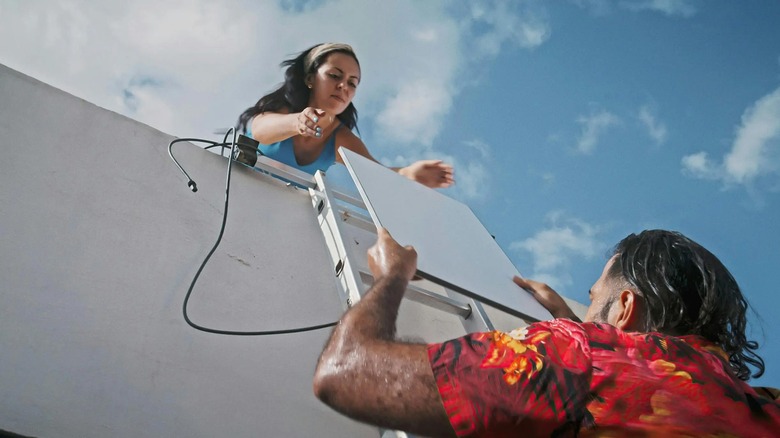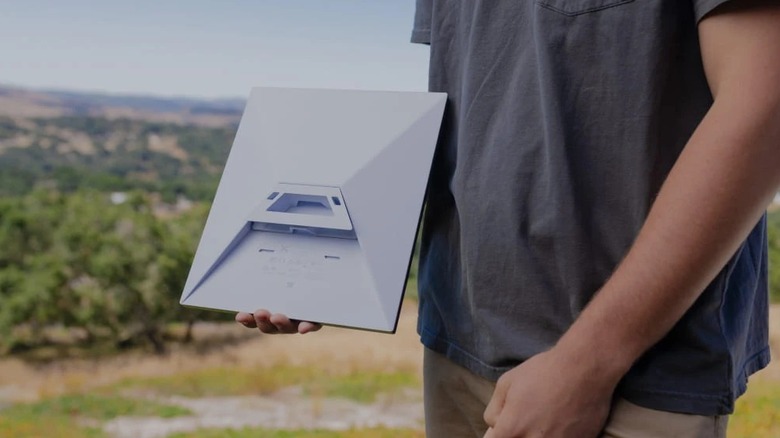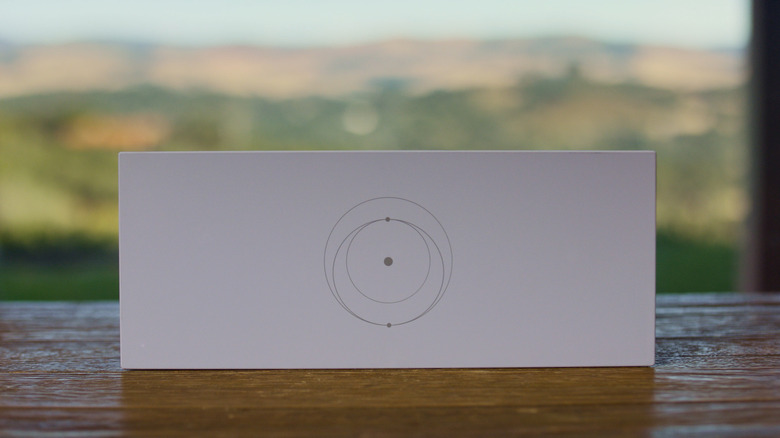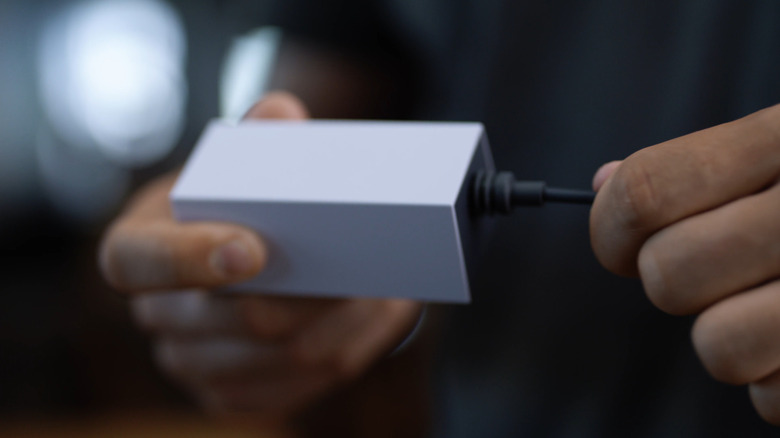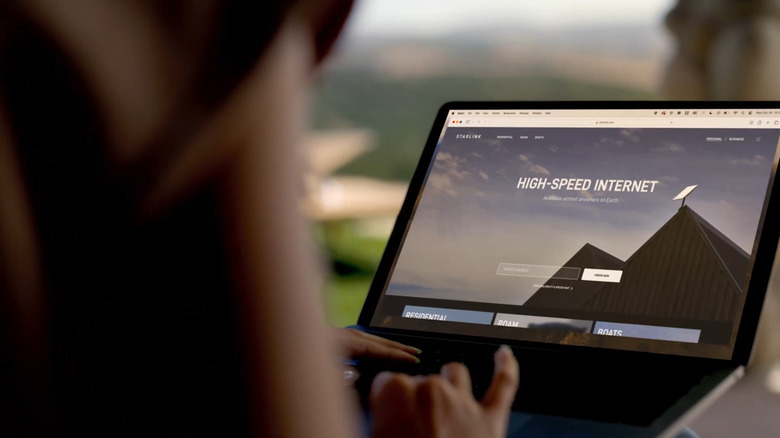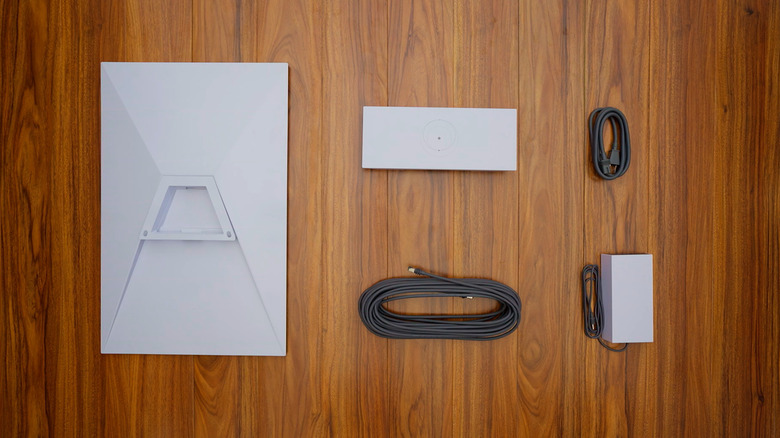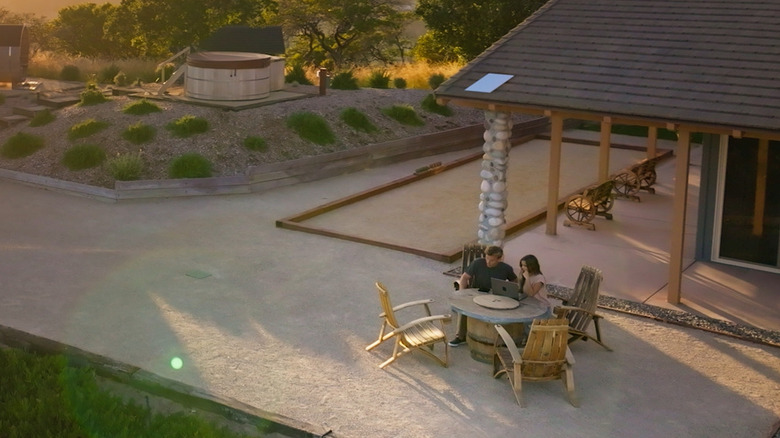Starlink Mini Vs. Standard: What's The Difference And Which Is Right For You?
Satellite internet service has been gaining popularity and is expected to boom in the coming years, and for good reason. It offers reliable internet speeds even in the most remote of areas, and with some providers, installation is super quick and easy, even without professional help.
Out of the handful of satellite internet providers in the market today, Starlink is arguably the most popular, thanks to its rapidly growing satellite constellation and worldwide coverage. Add these to the fact that the company offers a range of plans and hardware options for every kind of user.
Among all the Starlink dishes available, though, the Standard and Mini are two of the most accessible and widely used. They do have some overlap in terms of application and features, but there are also various differences between them. We'll cover exactly how the Standard and the Mini kits vary from each other and which one is the better fit for your needs.
Starlink Standard and Mini dish differences
One of the biggest differences between the Starlink Standard and Mini is the dish. While their material is the same (both are made of pure Teflon), their sizes aren't. The Standard dish measures 23.4 inches by 15.07 inches by 1.5 inches and weighs over six pounds without the kickstand. On the other hand, the Mini dish is only 11.75 inches by 10.2 inches by 1.45 inches, with a weight of 2.43 pounds. With such size contrast, you can also expect that they're not equally easy to carry on the go. The Mini can readily fit in a backpack, but the Standard has to be hauled around with both hands.
Besides the size, the dishes handle snow differently. While the Standard can melt up to 1.5 inches of snow every hour, the Mini can only do up to an inch at the same duration. In terms of general weather resistance, though, the IP rating for Starlink Standard and Mini is similar. They're both rated IP67, which means the dish is fully sealed against dust and can withstand temporary immersion in water. They can also operate even at wind speeds of 60 mph. However, it's still recommended not to keep the dish out in the open during more extreme weather events like a hurricane or tornado.
Starlink router comparison
A Starlink Standard kit already comes complete with a dedicated router, the newest of which is the Gen 3. It uses Wi-Fi 6 and 802.11 a/b/g/n/ac/ax Wi-Fi technology, boosting its range to 3,200 square feet and supporting as many as 235 connected devices. It also has two built-in Ethernet ports should you prefer to use a wired connection instead. While the Standard router is rated at IP56 (protection against dust and high-pressure water jets), it's only designed for the indoors.
On the flip side, the Mini doesn't have a separate router like the Standard. Instead, the router is integrated into the dish itself. It runs on Wi-Fi 5 and 802.11a/b/g/n/ac Wi-Fi technology, which isn't as powerful as the Gen 3 Router but still offers a decent coverage of 1,200 square feet and up to 128 connected devices. Like the Standard, you can use a wired connection with the Mini router. However, there's only one Ethernet port available. This port supports any standard LAN cable, but Starlink recommends using the special RJ45 cable for the Mini instead. Regular cables can cause dust and waterproofing issues with the dish since the port isn't as sealed. The proprietary LAN cable, though, features sealing rings to keep the dish at an IP67 rating.
Comparing the two routers' performance, users typically experience lower speeds on the Mini. Speeds will largely depend on a variety of factors, but for a point of reference, YouTuber Bantha Overland did a live test video in which the Standard Starlink achieved over 400 Mbps download speed while the Starlink Mini reached speeds of around 150 Mbps. Keep in mind that this anecdotal test may not reflect your situation. If you want better networking performance, you can always use the Starlink bypass mode to connect the dish to a third-party router. Both the Standard and Mini support this capability.
Power supply and consumption
With their different dish sizes, the Starlink Standard and Mini naturally have different power supplies and needs. The Standard consumes 20W when idle but jumps to an average of 75 to 100W when in use. The Mini, on the other hand, draws significantly less power at only 15W when idle and averaging 20 to 40W while running. These figures, of course, can change depending on how much you use the Starlink, how hot or cold the surroundings are, and whether or not you're using the Snow Melt feature.
In terms of power supply, the Standard works using Power over Ethernet (PoE). This means it doesn't plug directly into any supply and just gets both data and power from the router through the LAN cable. You can then power the Standard in two ways: With the included AC power brick or using the DC-DC power supply from the Starlink Shop (for US customers only). The AC brick requires a 100 to 240V source and draws up to 2.5A. The DC supply needs 12 to 48VDC with a 30A input and delivers 56V 3.57A to run the dish and router.
Unlike the Standard, the Mini isn't designed for using PoE. Instead, it only accepts an input of 12 to 48VDC. There are, however, more ways to power the Mini than the Standard. First, you can use the AC power supply included in the package. It works with a 100 to 240V wall outlet but converts that to 30V 2A for the dish. Another power option is with the USB-C cable Mini accessory, which should be paired with a USB PD 20V 5A (100W) supply. You can also buy the Car Adapter for the Mini, which you can then connect to a standard car cigarette lighter (12 to 24V outlet).
Price and plans
There's a stark difference between what you'll spend on the Starlink Mini versus the Standard. Starting with the subscription options, the Standard is available for two of the three Starlink Personal plans (Residential and Roam Unlimited). The Residential plan is priced at $120 per month, includes unlimited data, and is suited for use in fixed locations. Meanwhile, the Roam Unlimited costs $165 monthly. It gives you, well, unlimited data, and can be used anywhere there's Starlink coverage, even while in motion.
While you can get the Standard for either the Residential or Roam plan, the Mini is limited to Roam. However, it's available not only for the Roam Unlimited but also for the more affordable 50GB option. The Roam 50GB plan costs $50 per month and, as you might have guessed, offers only 50GB a month. Like the Roam Unlimited, it works while you're out on the road or sea.
Besides the subscriptions, you'll also notice a gap between the hardware cost of the Standard and Mini. The Mini, although smaller, is a lot more expensive. The Standard goes for $349, while the Mini is priced at $599 for the necessary hardware. With all that being said, if you're in a fixed site like your home, you might want to go with the Standard since it's the only one between the two with support for the Residential plan. If you're going camping with your Starlink or need an internet setup while on the go, you can buy either kit. Just keep in mind that the Standard is only available for the Roam Unlimited, not for the 50GB plan.
Starlink accessory comparison
When you buy any Starlink kit, everything you need to get it up and running is included in the package. However, the Starlink accessories in the Standard and Mini are not exactly the same. In the Standard kit, you have five total accessories in the box: the Gen 3 Router for the networking, the power supply for both the router and dish, a kickstand for holding and tilting the dish when positioned on the ground, and the cables (Ethernet and power cables) for wiring everything up.
The LAN cable is a little under 50 feet in length and comes with sealing rings to protect the dish from the elements. There's also a longer 147.6-foot cable available in the shop if you need it. The Standard's AC cable is almost five feet long, which should generally be enough when setting up the router and power supply indoors. If you're not using the Standard dish on a flat ground, you'd have to buy either a mount for the wall, roof, or vehicle roof rack or a pipe adapter for an existing metal pole measuring 1.25 to 2.5 inches.
In the Mini kit, you can also find a kickstand (specifically fit for the Mini dish), a 50-foot power cable (but DC instead of AC), a smaller power supply than the Standard, a Starlink plug for the dish's Ethernet port, and a pipe adapter (fit for any pole that's 1.25 to 2 inches in diameter). You can still buy a mount for the Mini if you like, but in some cases, the kickstand or pipe adapter can do the job just fine. When using the dish for wired connection, however, you'd need to get the Starlink Ethernet cable as it isn't included in the package. The Mini offers other convenient accessories you can get from the Starlink shop, too. There's a mini USB-C cable and a mini car adapter you can substitute for the DC power cable.
What's the right Starlink for you?
Picking the right Starlink kit is highly dependent on where and how you'll use the service. If you're looking to bring Starlink to your road trips, the Mini's portability and power consumption might fit your needs better. It's small enough to squeeze right into small vehicles; plus, you don't have to worry about wiring an extra router. Since the Mini can be easily plugged into a car adapter, any 100W USB PD power source like a power station, or even your vehicle's own electrical system, it's convenient to bring on the road where you're nowhere near a standard AC outlet. If your vehicle's running on DC, you won't have to haul around an inverter like you would when using the Standard (if you don't have a DC-DC power supply or have access to one). You don't have to worry much about the Mini's consumption, too, as it isn't as much as the Standard.
If you'll just be using Starlink at home, you might want more speed for binge-watching your Netflix shows or gaming with friends online. In that case, the Standard might be the better dish. Its out-of-the-box networking capabilities are more powerful than the Mini's since it already features Wi-Fi 6. The Standard also supports the Residential plan, which is cheaper than the Roam Unlimited, and if you don't really need a compact dish for your roof, the Standard offers more budget-friendly hardware, too. The power supply and consumption of the Standard won't be an issue at home since you have access to an AC wall outlet.
